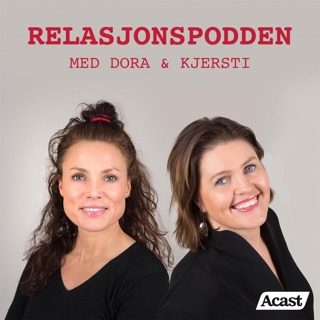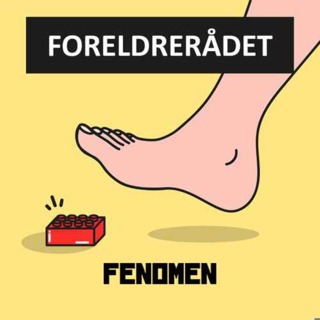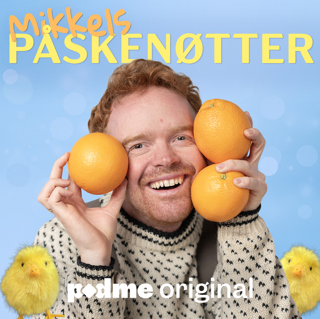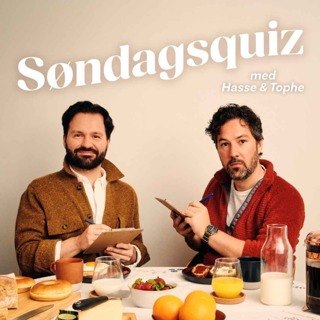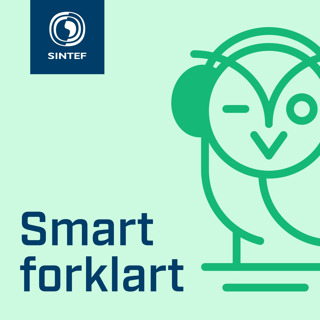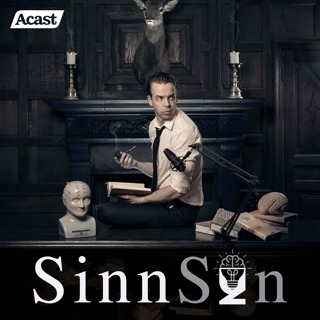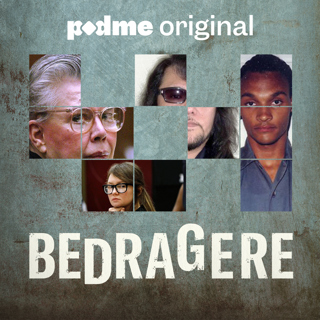
Episode 33 Preview
Subscribe on Apple Podcasts Subscribe on Google Play Subscribe on Stitcher Subscribe on YouTube If you've ever been faced with a group of two, four, 10, 20, or more students, you've been thankful for all of the great strategies for classroom management that friendly behavior analysts have shared with you. Wait, what? You don't have any great strategies for dealing with all those students? Well, don't tell them that. Just fake it until next week's full-length episode on classroom management! In the meantime enjoy these citations, a musical interlude, and some general good-times with your hosts. Articles for next week: Foxx, R.M. & Shapiro, S.T. (1978). The timeout ribbon: A nonexclusionary timeout procedure. Journal of Applied Behavior Analysis, 11, 125-136. doi: 10.1901/jaba.1978.11-125 Kasson, E.M. & Wilson, A.N. (2016). Preliminary evidence on the efficacy of mindfulness combined with traditional classroom management strategies. Behavior Analysis in Practice, online only. doi: 10.1007/s40617-016-0160-x
14 Jun 201713min

Episode 32 - SLEEEEP!!! w/ Dr. Sandy Jin
Subscribe on Apple Podcasts Subscribe on Google Play Subscribe on Stitcher Everyone sleeps. Some of us, not so well. So we spend this week's episode talking about how to assess and treat sleep problems and considerations relevant to helping families implement these treatments without having nightmares about BCBAs! And, thanks to Jackie's amazing stalking abilities, we're joined by Dr. Sandy Jin to discuss her research into the matter. We're also joined by Rob, who has more sleep training than the average pediatrician, Diana, who can answer the popular children's question, "When is God's birthday?", and Jackie, who'll be sharing the results of her husband's participation with bedtime pass research. This podcast provides the equivalent of eight hours of delightful dreams. Articles discussed this episode: Friman, P.C., Hoff, K.E., Schnoes, C., Freeman, K.A., Woods, D.W., & Blum, N. (1999). The bedtime pass: An approach to bedtime crying and leaving the room. Archive of Pediatric and Adolescent Medecine, 153, 1027-1029. doi:10.1001/archpedi.153.10.1027 Jin, C.S., Hanley, G.P, & Beaulieu, L. (2013). An individualized and comprehensive approach to treating sleep problems in young children. Journal of Applied Behavior Analysis, 46, 161-180. doi: 10.1002/jaba.16 If you're interested in ordering CEs for listening to this episode, click here to go to the store page. You'll need to enter your name, BCBA #, and the two episode secret code words to complete the purchase. Email us at abainsidetrack@gmail.com for further assistance.
7 Jun 20171h 9min

Episode 32 Preview
Subscribe on Apple Podcasts Subscribe on Google Play Subscribe on Stitcher Subscribe on YouTube It's our latest preview episode. Next week we'll be talking about sleep (said in a terrifying Bela Lugosi voice, please) with Dr. Sandy Jin. But first, some research on words people hate in behavior analysis and our regular brand of nonsense. Articles for next week: Friman, P.C., Hoff, K.E., Schnoes, C., Freeman, K.A., Woods, D.W., & Blum, N. (1999). The bedtime pass: An approach to bedtime crying and leaving the room. Archive of Pediatric and Adolescent Medecine, 153, 1027-1029. doi:10.1001/archpedi.153.10.1027 Jin, C.S., Hanley, G.P, & Beaulieu, L. (2013). An individualized and comprehensive approach to treating sleep problems in young children. Journal of Applied Behavior Analysis, 46, 161-180. doi: 10.1002/jaba.16
31 Mai 201719min

Episode 31 - Problem Solving w/ Dr. Judah Axe
Subscribe on Apple Podcasts Subscribe on Google Play Subscribe on Stitcher Problem: You need to keep up with behavior analytic research, get CEs, and be entertained. What can you do? Close your eyes, and imagine you're hanging around the ABA Inside Track Table. What do you see? It's a host and two fabulous co-hosts! And who's that? Special guest Dr. Judah Axe! What do you hear? It's a hilarious and educational discussion about Diana's hatred of new math, Jackie's inappropriate hugging, and Judah's tips for hiding tape recorders circa 1989. Open your eyes: it's the latest episode of ABA Inside Track, the solution to all of your problems! Articles discussed this episode: Park, H. & Gaylord-Ross, R. (1989). A problem-solving approach to social skills training in employment settings with mentally retarded youth. Journal of Applied Behavior Analysis, 22, 373-380. doi: 10.1901/jaba.1989.22-373 Kisamore, A.N., Carr, J.E., & LeBlanc, L.A. (2011). Training preschool children to use visual imagining as a problem-solving strategy for complex categorization tasks. Journal of Applied Behavior Analysis, 44, 255-278. doi: 10.1901/jaba.2011.44-255 If you're interested in ordering CEs for listening to this episode, click here to go to the store page. You'll need to enter your name, BCBA #, and the two episode secret code words to complete the purchase. Email us at abainsidetrack@gmail.com for further assistance.
24 Mai 20171h 28min

Episode 31 Preview
Subscribe on Apple Podcasts Subscribe on Google Play Subscribe on Stitcher Subscribe on YouTube Whether you have one or 99 problems, there's got to be a better way to solve them. Next week, we'll be joined by special guest, Dr. Judah Axe from Simmons College, to get the bottom of the problem solving mystery. But first, Diana shares an infographic on scientific bologna, Jackie teaches us all about ponytails, and we rate our top Beatles albums. And Batman demands we honor the function of behavior. Articles for next week: Park, H. & Gaylord-Ross, R. (1989). A problem-solving approach to social skills training in employment settings with mentally retarded youth. Journal of Applied Behavior Analysis, 22, 373-380. doi: 10.1901/jaba.1989.22-373 Kisamore, A.N., Carr, J.E., & LeBlanc, L.A. (2011). Training preschool children to use visual imagining as a problem-solving strategy for complex categorization tasks. Journal of Applied Behavior Analysis, 44, 255-278. doi: 10.1901/jaba.2011.44-255
17 Mai 201716min

Episode 30 - Prompting
Subscribe on Apple Podcasts Subscribe on Google Play Subscribe on Stitcher Welcome to prompting Thunderdome where only one type of prompting can survive! Will it be the classic most-to-least prompt? The odd-sounding "no-no" prompt? Maybe least-to-most prompting will take the top prize. All we can say is, you won't believe who wins it all! Plus, the secrets of Diana's birthday present, hot takes on prompts Rob hates, and the most famous Duplo constructs this side of the Mississippi. Prompting research is the ::expectant look:: Articles discussed this episode: Libby, M.E., Weiss, J.S., Bancroft, S., & Ahearn, W.H. (2008). A comparison of most-to-least and least-to-most prompting on the acquisitio of solitary play skills. Behavior Analysis in Practice, 1, 37-43. Leaf, J.B., Sheldon, J.B., & Sherman, J.A. (2010). Comparison of simultaneous prompting and no-no prompting in two-choice discrimination learning with children with autism. Journal of Applied Behavior Analysis, 43, 215-228. doi: 10.1901/jaba.2010.43-215 If you're interested in ordering CEs for listening to this episode, click here to go to the store page. You'll need to enter your name, BCBA #, and the two episode secret code words to complete the purchase. Email us at abainsidetrack@gmail.com for further assistance.
10 Mai 20171h 7min

Episode 30 Preview
Subscribe on Apple Podcasts Subscribe on Google Play Subscribe on Stitcher Subscribe on YouTube Let's get ready for prompting with this week's new preview episode. Ever wonder what the best prompts around are? We get the discussion going with a comparison of most-to-least, least-to-most, simultaneous, and no-no prompts. But before the big discussion next week, Diana stops to finally give us all our gifts from APBA and to share some excellent listener emails. Then we discuss Julia, the new Muppet with autism on Sesame Street. Finally, other nonsense ensues, probably something with Jackie and terrible TV shows. Articles for next week: Libby, M.E., Weiss, J.S., Bancroft, S., & Ahearn, W.H. (2008). A comparison of most-to-least and least-to-most prompting on the acquisitio of solitary play skills. Behavior Analysis in Practice, 1, 37-43. Leaf, J.B., Sheldon, J.B., & Sherman, J.A. (2010). Comparison of simultaneous prompting and no-no prompting in two-choice discrimination learning with children with autism. Journal of Applied Behavior Analysis, 43, 215-228. doi: 10.1901/jaba.2010.43-215
3 Mai 201716min

Episode 29 - It's Not Easy Being Green
Subscribe on iTunes Subscribe on Google Play Subscribe on Stitcher Hey hey hey! ::cow mooing sound effect:: It's J-Dog, Dr. D, and the Rob-meister, comin' at ya with an all new episode of ABA Inside Track. This week the zoo crew is trying to use behavior analysis to go green. Our street team will be handing out rulers to all the campers at the state park picking up trash. And, at the top of the hour, we'll prank local university students by hiding all the recycle bins to see how much trash we can get them to generate. ::WAHOOGA:: Finally, one lucky winner is going to take home the top prize for conserving the most gas! ::fart noises:: Then, coming up after the show, a roundtable discussion of issues related to conservation and how ABA can provide meaningful solutions to ecological crises. But right now, back to our hilarious antics...This ain't your mom's podcast about behavior analysis, boy-ee! Articles discussed this episode: Clark, R.N., Burgess, R.L., & Hendee, J.C. (1972). The development of anti-litter behavior in a forest campground. Journal of Applied Behavior Analysis, 5, 1-5. doi: 10.1901/jaba.1972.5-1 Foxx, R.M. & Schaeffer, M.H. (1981). A company-based lottery to reduce the personal driving of employees. Journal of Applied Behavior Analysis, 14, 273-285. doi: 10.1901/jaba.1981.14-273 Miller, N.D., Meindl, J.N., & Caradine, M. (2016). The effects of bin proximity and visual prompts on recycling in a university building. Behavior and Social Issues, 25, 4-10. doi: 10.5210/bsi.v.25i0.6141 Chance, P. & Heward, W.L. (2010). Climate change: Meeting the challenge. The Behavior Analyst, 33, 197-206. If you're interested in ordering CEs for listening to this episode, click here to go to the store page. You'll need to enter your name, BCBA #, and the two episode secret code words to complete the purchase. Email us at abainsidetrack@gmail.com for further assistance.
26 Apr 20171h 17min





